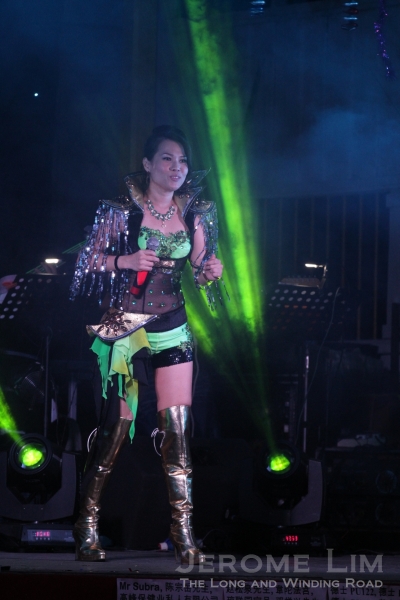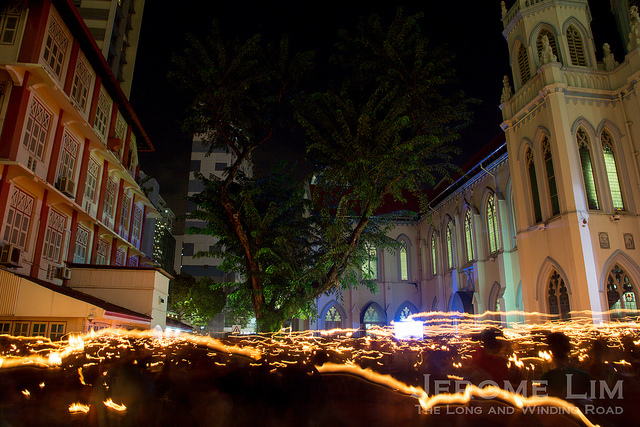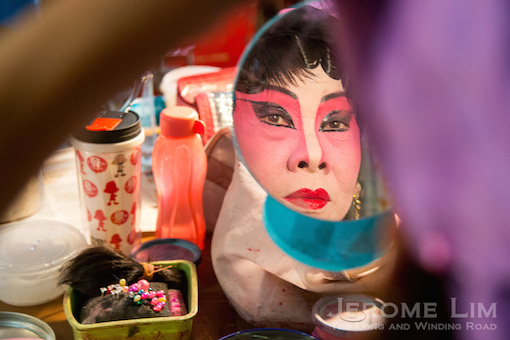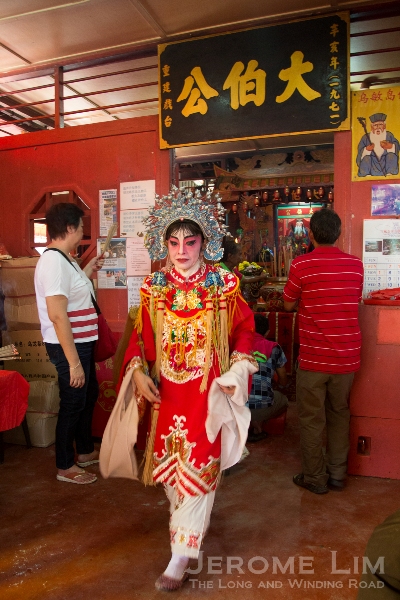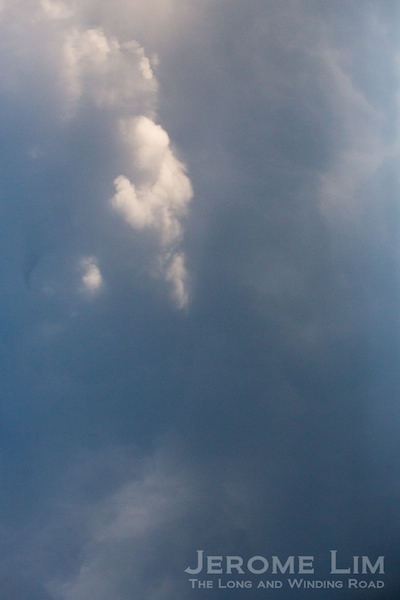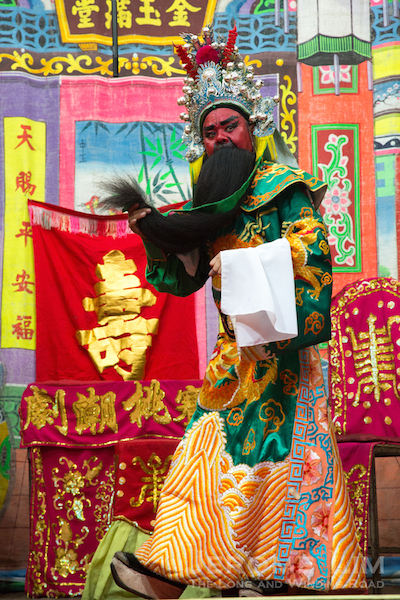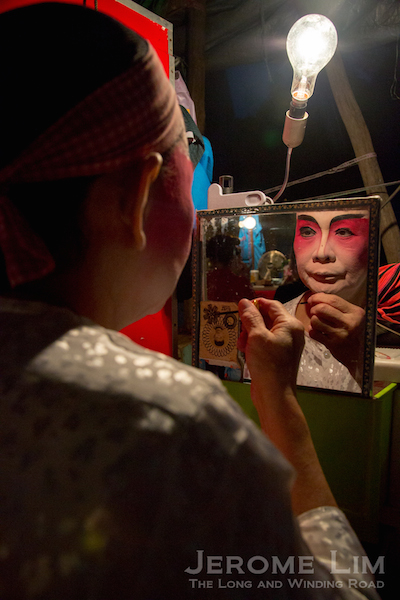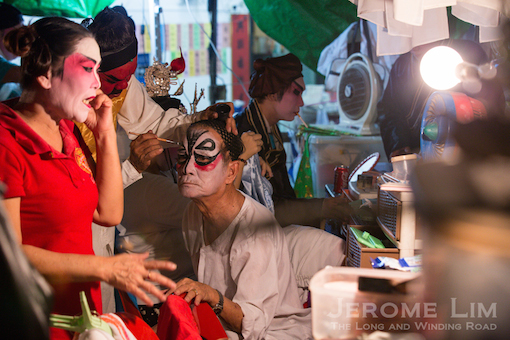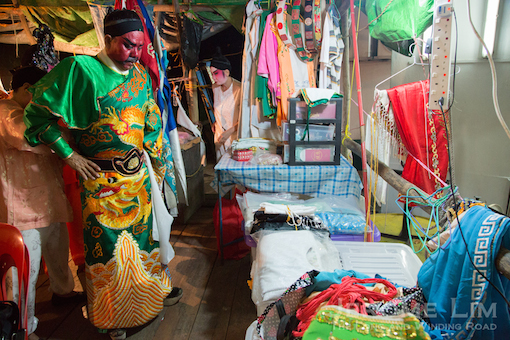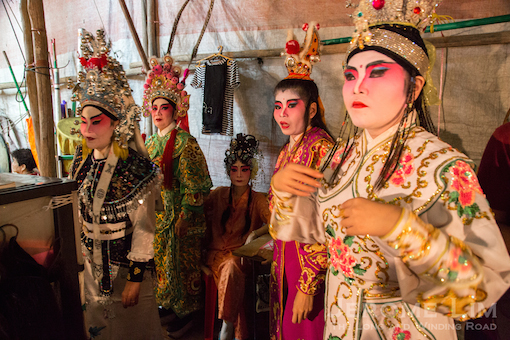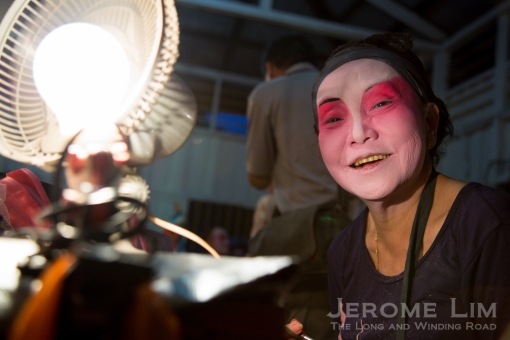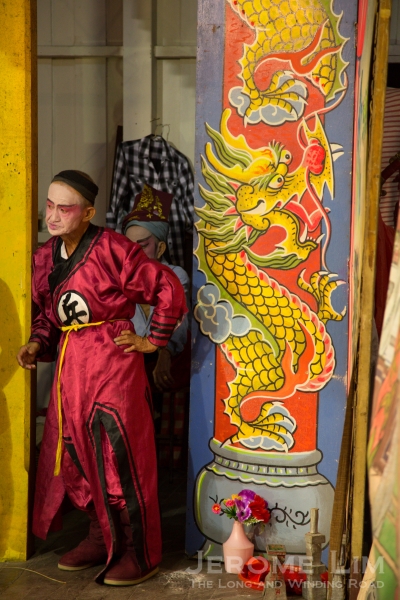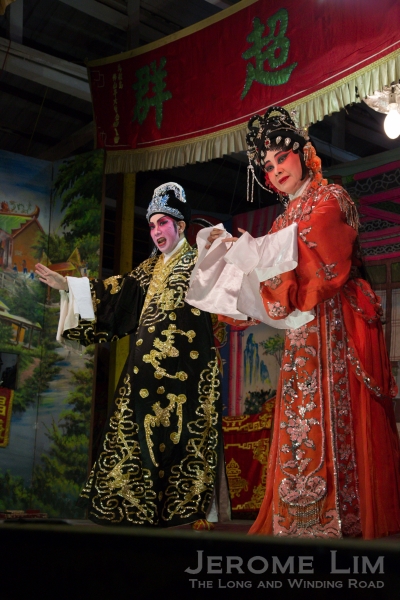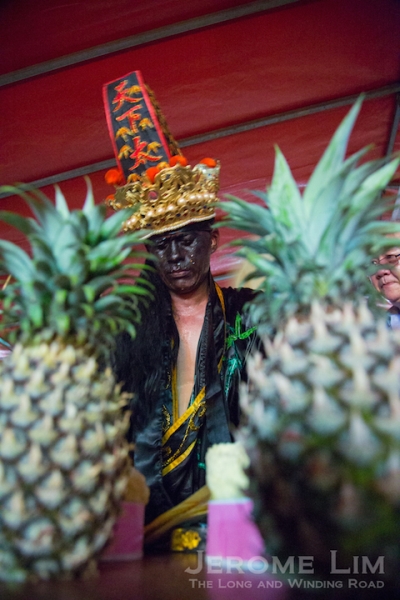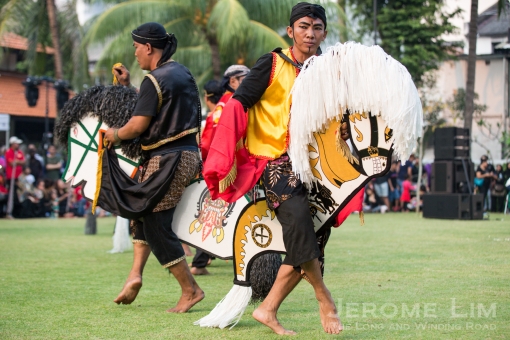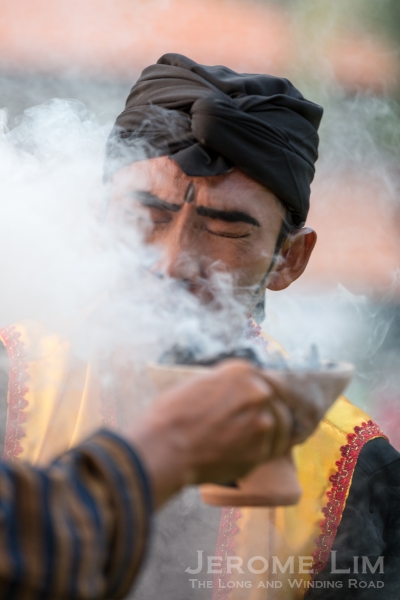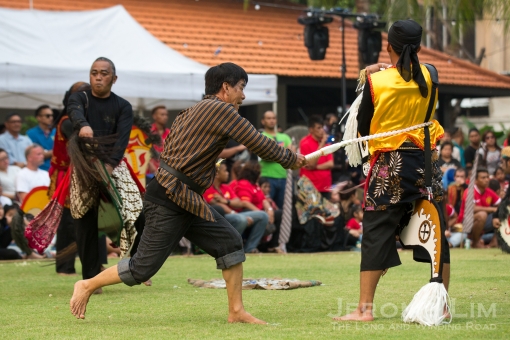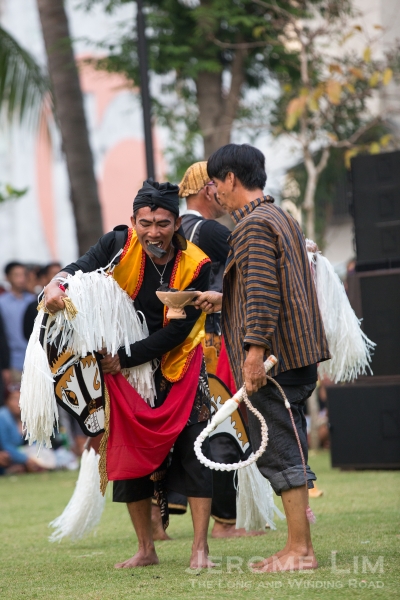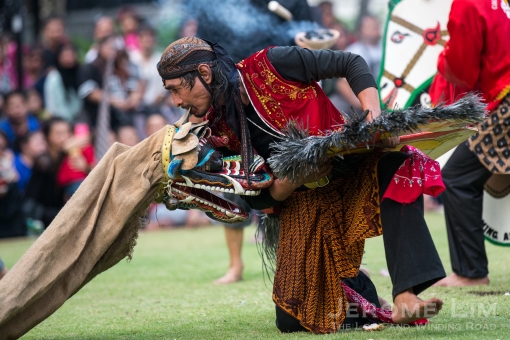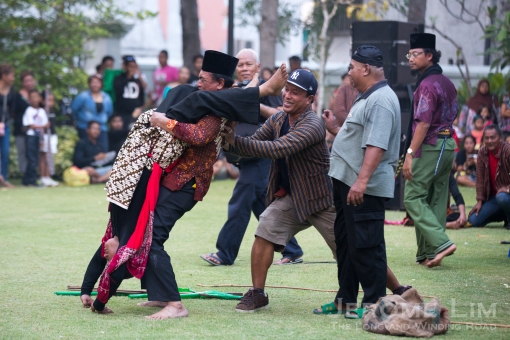The last place in Singapore to soak in the atmosphere of the festivities which accompany a religious festival in a setting most of us may not seen for a quarter of a century is Pulau Ubin, the last island off Singapore (save for Sentosa) which has a community of residents. It is in the remnants of a village close to the island’s jetty where a Chinese Taoist temple, the Tua Pek Kong temple (Pulau Ubin Fo Shan Ting Da Bo Gong Temple or 乌敏岛佛山亭大伯公庙) dedicated to the Earth Deity 土地公 (Tu Di Gong in Mandarin) who is also commonly referred to in Singapore as 大伯公 – Tua Pek Kong in Hokkien or Da Bo Gong in Mandarin, is found. It setting is very much one that is reminiscent of many of the rural Chinese villages which were common on the main island of Singapore up until the 1980s, with a village temple at its centre with a permanent Chinese Opera (referred to locally as “wayang”) stage often located across a clearing from it.

Devotees offering candles at the Pulau Ubin Tua Pek Kong Temple. The temples celebrates two festivals in a big way.
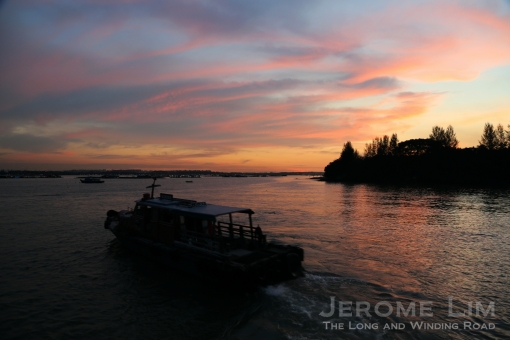
Colours painted by the setting sun – setting the tone for a colourful night of entertainment under the stars.
The temple plays host twice a year to a series of festivities which are held to commemorate two important Chinese festivals which the temple celebrates in a big way. The bigger of the two is the Tua Pek Kong festival, celebrated to commemorate the birthday of the Earth Deity around the 15th day of the 4th Chinese month, while the Hungry Ghost festival which is celebrated with an auction around the 15th day of the 7th month, is a relatively quieter affair.

An image of the Earth Deity, Tua Pek King at the main altar of the Pulau Ubin Tua Pek Kong Temple.
It is during both the festivals that the wayang stage sees use. Wayangs in the form of Teochew opera performed by the island’s Teochew Opera Troupe (which I photographed at last year’s Hungry Ghosts Festival – click on this link for the post) based at the temple, are staged for the entertainment of the temple’s devotees (also for the visiting spirits in the case of the Hungry Ghost Festival) providing a wonderful opportunity for Singaporean’s to revisit an almost forgotten tradition. In keeping up with the times, the stage also plays host to what perhaps is the new-age wayang – the getai (歌台), a somewhat kitsch (some even consider it crude) form of entertainment which by and large have replaced the wayangs of old during similar celebrations around Singapore.

A brightly dressed dancer on stage – getai is often seen as kitsch and somewhat crude, but it does have a huge following in Singapore.
I had the opportunity to see the new wayang in action in the old village like setting provided by Pulau Ubin’s stage last evening. The getai was held on the last evening of the series of festivities held over six days from 23 to 28 May this year and saw a huge turnout – boats worked like clockwork ferrying a steady stream of visitors to the temple and the festivities – which certainly made the atmosphere very festival like. Under the stars in in the comfort of the cool breeze, the audience had the seats provided already filled as the stage came alive with lights and action matched by the brilliant colours provided by the of rays of the setting sun.
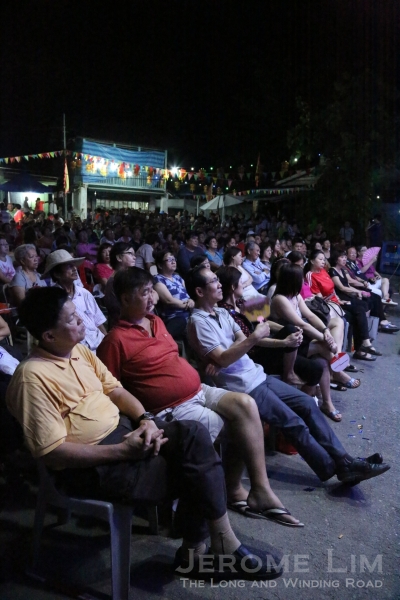
The large crowd seated in front of the stage.
While I would not be one to admit to being a fan of getai, I will admit that the experience of watching the gaudily dressed stars of the song stage, entertain with song many which were could well be tunes of yesteryear, as well as converse and joke in Hokkien on a stage under the stars, was one that I thoroughly enjoyed. It was particularly heartening to see the large crowd – many who broke out into smiles and laughter as the evening entertainment progressed, enjoy themselves. The atmosphere was such that it did also seem to free both young and old from the distractions we have to much of in the modern world (I must have been the only one not taking a photograph or a video clip with a mobile device who was seen to be fiddling with my mobile phone).

Marcus Chin (陈建彬) on stage.

Members of the audience had their eyes glued to the stage throughout most of the evening.
The getai show which was hosted by Xu Qiong Fang (浒琼芳) and Wang Lei (王雷) saw a string of getai stars appear on stage. Not having admitted to being a fan, there is also no need for me to pretend to know who I was being entertained by. I did however recognise one of the stars from a previous experience watching getai under the Flyer. That was veteran entertainer Marcus Chin (陈建彬). I was able to identify the Babes in the City (宝贝姐妹) pairing, only through a comment left on my instagram post by filmaker Royston Tan (the pair featured in a video he produced, “The Happy Dragon“, to promote Safe Sex) .

Babes in the City (宝贝姐妹).

Host Wang Lei (王雷) also sang – standing next to him is Lee Bao En (李宝恩), a young getai star from Johor.
A relatively more recently introduced form of festival entertainment, the getai does in fact have a long enough tradition, having gained in popularity during the 1970s as interest in the traditional forms of entertainment such as the Chinese Opera and Puppet Shows was waning. On the evidence of the turnout, it does seem that, love it or hate it, it does have a following and being more adaptable than the more traditional street theatre, it certainly is here to stay. It was nice to be out under the stars in a setting one can otherwise no longer find. It felt as if it was yesterday … almost. It would have been nice to see just one thing more – the mobile food vendors (particularly the bird’s nest drink and the steamed sweet corn seller) who never were very far away whenever the wayang came to town.

The view backstage.

A view through a window of the permanent wayang stage.
More photographs of the stage and audience:



